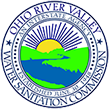The Fish Tissue Contaminants Program characterizes the levels of certain contaminants in Ohio River fish and provides a basis for determining the need for human health/fish consumption advisories and track the levels of these contaminants over time.
Since the 1960s, ORSANCO and other agencies have collected fish tissue samples for contaminant analyses as a means of determining the presence or absence of certain pollutants, such as mercury, polychlorinated biphenyls (PCBs), pesticides (DDTs, Chlordanes, etc) and other organic chemicals. These pollutants can have adverse impacts on the environment even when their concentration in water is below detection levels. In 1987, the program was modified and refined to allow the appropriate state agencies to use the data from the program as the basis for issuing fish consumption advisories.
Tissue samples are collected and prepared by ORSANCO staff, and shipped to a contract laboratory for analysis. ORSANCO staff quality assure and distribute data to the states for evaluation. An advisory committee comprised of state health and environmental quality personnel is convened to discuss the data and the need for and basis of fish consumption advisories. Advisories are issued, removed or modified by state agency personnel.
In addition to collecting fish and providing contaminant data to the states, ORSANCO also facilitates communication among the states to minimize differences in advisories issued for Ohio River fish. The occurrence of conflicting advisories has been reduced through the development of the Ohio River Fish Consumption Advisory Protocol, which is now used to issue advisories for the Ohio River.
View Ohio River fish consumption advisories. For fish consumption advisories within your state, contact your state agency.
For more information on the Fish Consumption Advisory Program, contact Rob Tewes.

